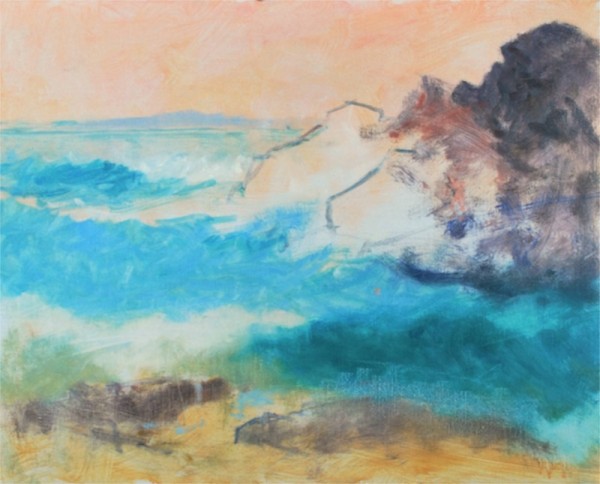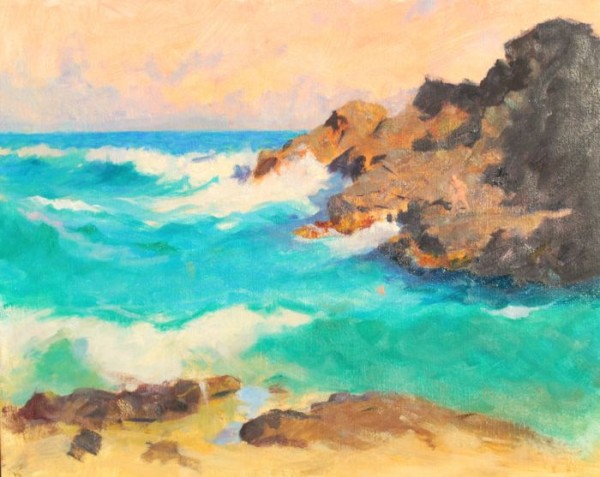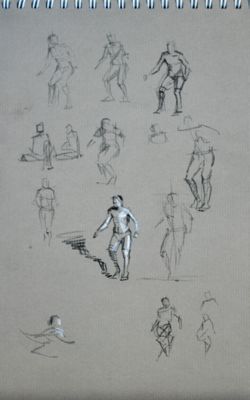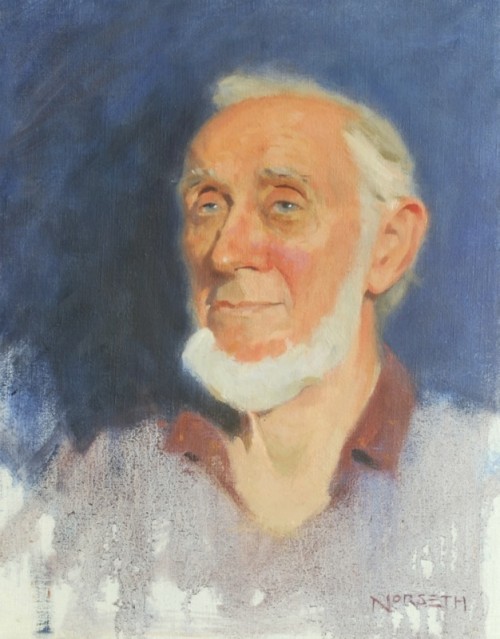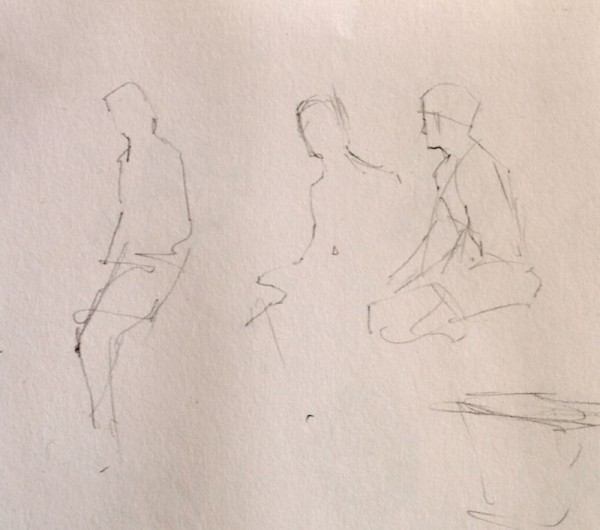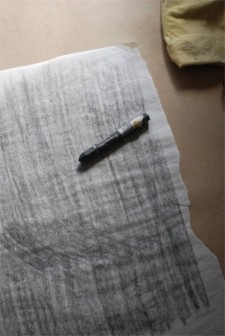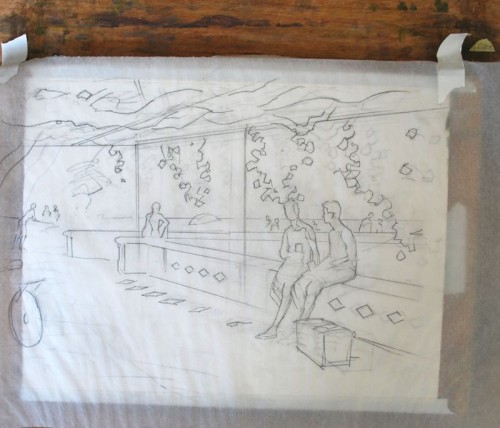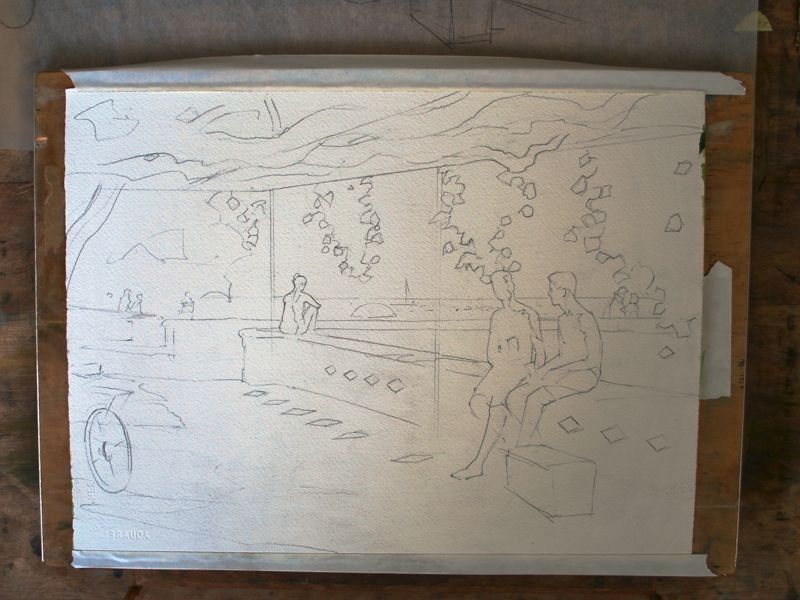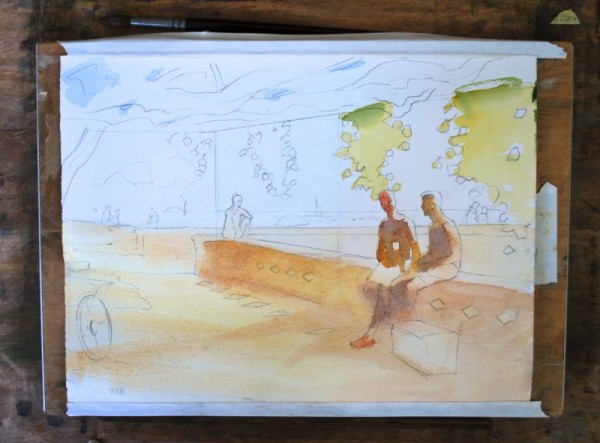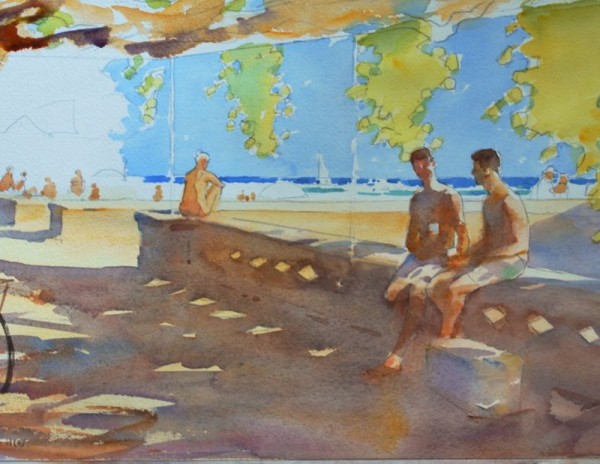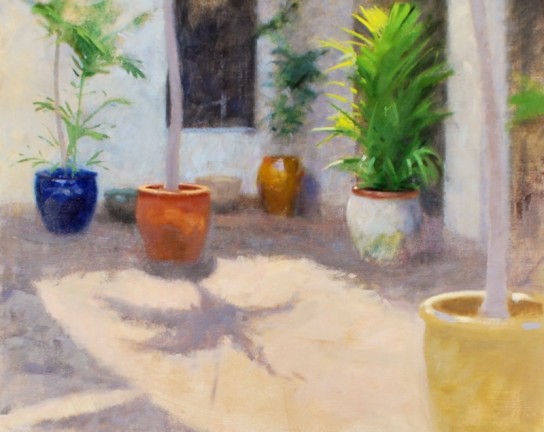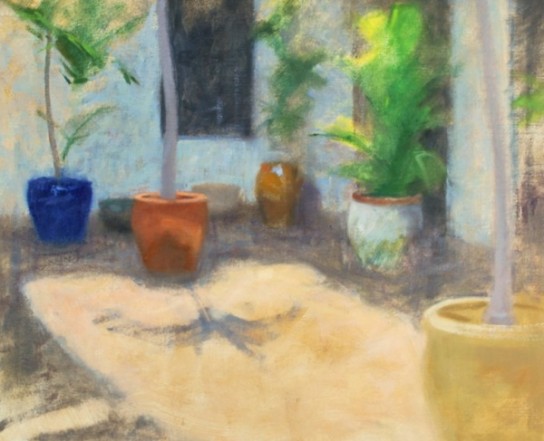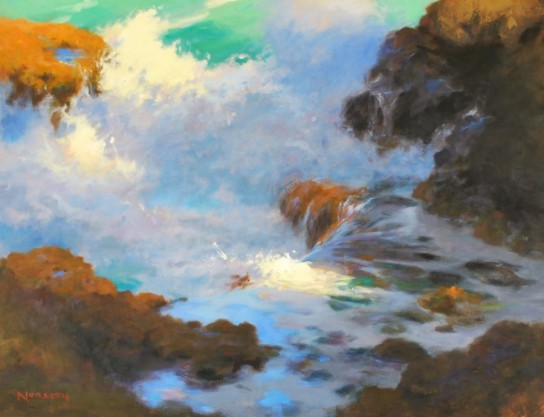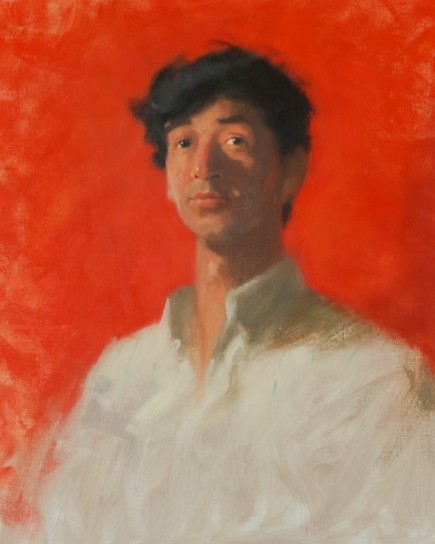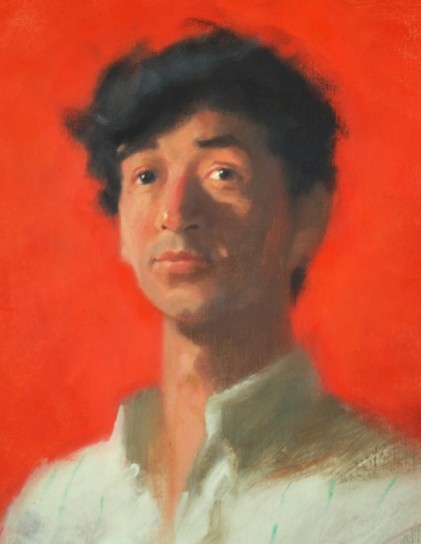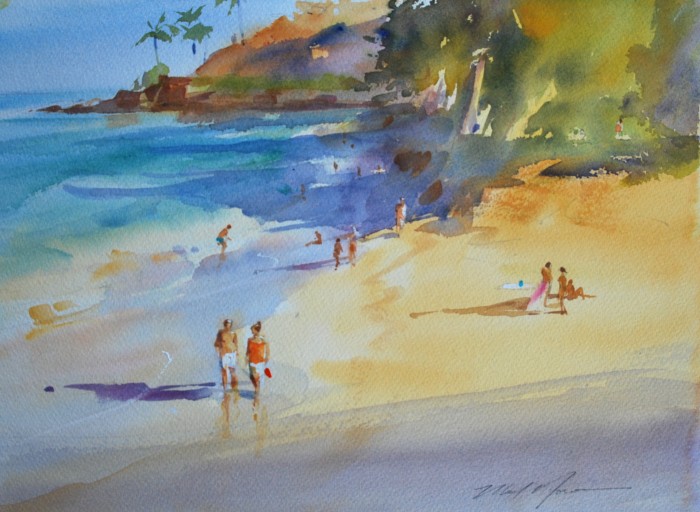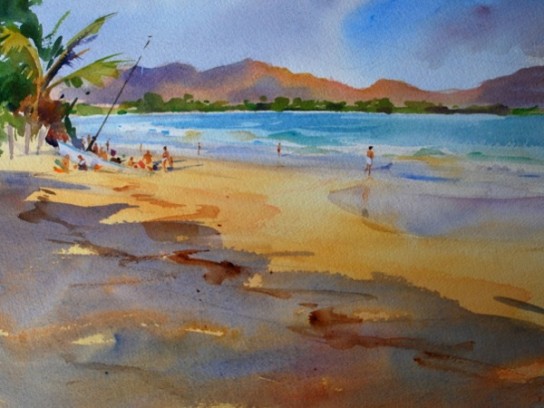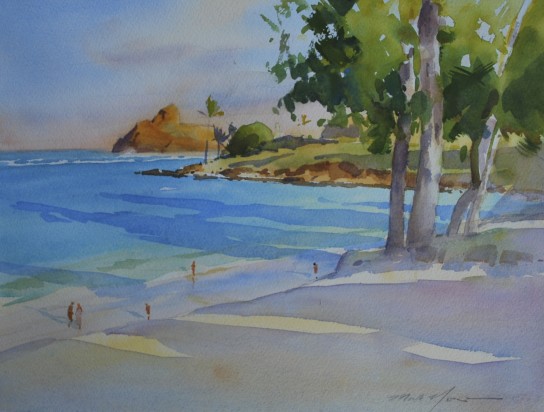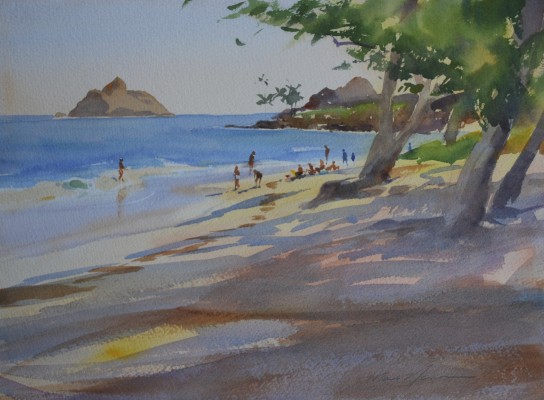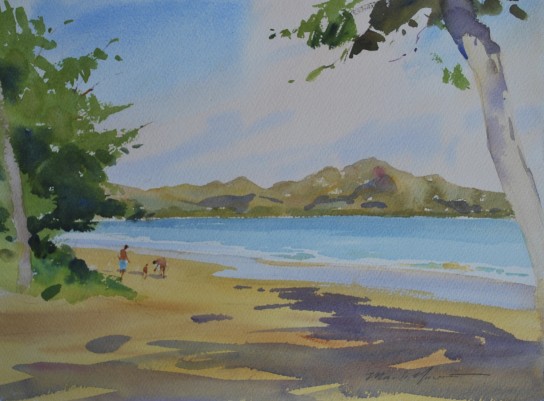I’m really enthused over working out of this lovely cove again, and the watercolor (see previous post) was an ideal way to break back into it.
I like to paint with a goal for the work, and by that I mean a motivation or reason for pursuing it artistically. This subject has distinctive elements and challenges that make it quite unique… it’s beautiful and it’s a bit dangerous here… and it doesn’t “pose” for me, it’s all in constant motion. Very challenging to work directly from.
Opposites Attract
Consider lights and darks; in one glance you have the brightest of whites in the light and the darkest of shadows, for color there are warm earth tones opposed by our shattering blue-greens. Lines are jagged or curvaceous, or even perfectly straight. The masses are dense, bulky and immobile in the rocks, or fluid and streaming in the water. Everything is in opposition, and it’s all interconnected within itself.
So with all of this packed into one small area, it warrants my best effort.
My first composition, from the prior watercolor, has led me to focus more on the distant figures and the contrast they present against the rocks as that incredibly dark, end-of-day shadow quickly draws itself across the cove.
But before any of that, I have to design and place the big shapes.
Here’s the first afternoons progress:
I worked until the light failed, after 4:00, and then made some mental notes of the figures that I observed around the rocks.
Back to work
I was fortunate to have several consecutive days that offered essentially similar light, so returned at the right time to continue on the painting. This is a matter of seeing that large shapes are where I want them, and making certain that the color, which is perhaps one of the things I try to be most genuine about, is true to nature. The motion of the waves has to be thought through…the powerful white of the waves draw the eye by contrast, and I want them to create a rhythm that moves across the painting successfully.
At this point I’ve begun to indicate a key figure, but haven’t yet made up my mind about the pose or position in the painting. Colors have developed another step, and the rhythm of the waves is being worked out. I find that this stage is much more important than noodling the painting of the waves in a more precise manner…that sort of work won’t help a bad pattern.
This was a good afternoon’s work.
Working out the figures
I spent some time and sketched out some possibilities from memory. Since they are tiny, I’m not concerned too much with the figures beyond their possessing an accurate sense of the light, good proportions and gesture.
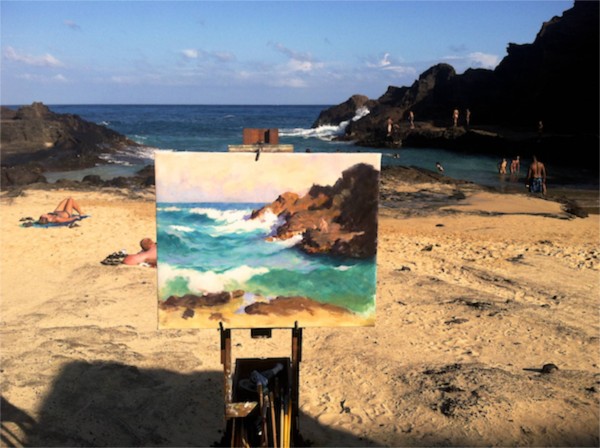
I’ll continue this post when I have more time! Thanks for reading.


